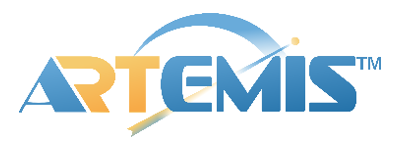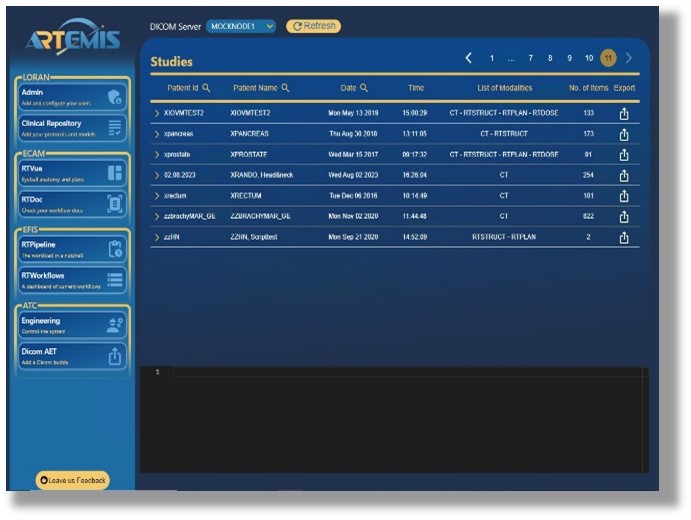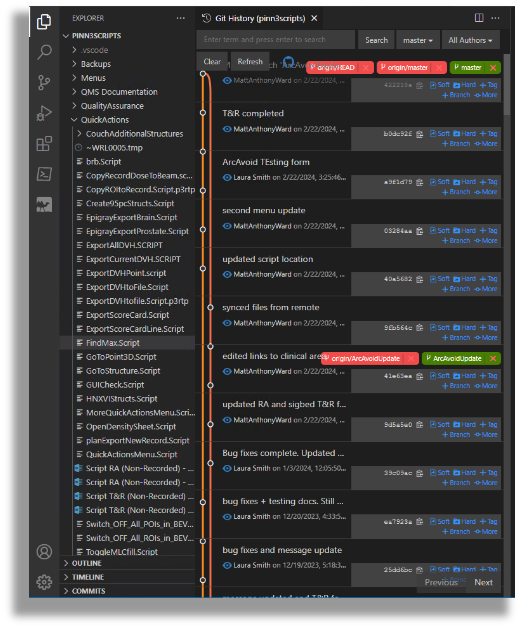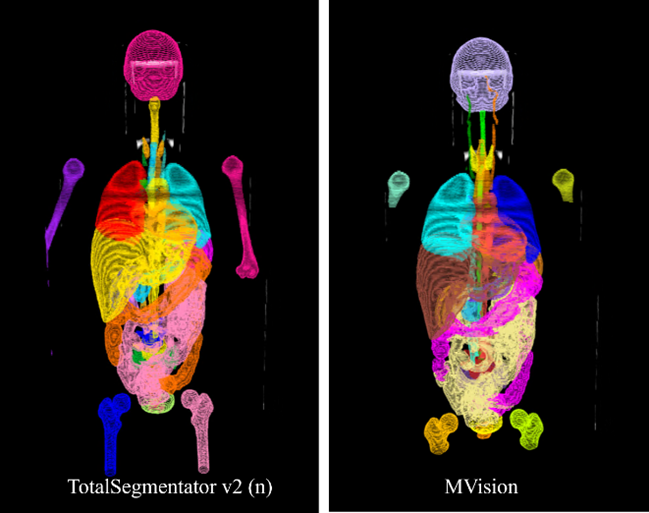Radiotherapy physics - scientific computing
The radiotherapy physics scientific computing team (RTSciCom) is made up of clinical scientists, software developers and technologists who work collaboratively on a series of computing-based projects that aim to improve the efficacy and efficiency of the radiotherapy treatments offered at UHS. This includes developing a fully automated radiotherapy task management system, facilitating the use of scripts within our treatment planning system to help streamline the patient planning process, developing GPU-based computing algorithms and exploring the use of AI tools in the segmentation of anatomical images. We also manage the local RT IT infrastructure and the clinical software tools, resolving their issues when they arise.
Our projects
A couple of major projects that we are working on are listed below:

ARTEMIS™ ©UHS 2022-24
ARTEMIS™ ©UHS 2022-24 is the new web-based DICOM hub and clinical task automation platform that will act as the entry portal for all CT data submitted to radiotherapy. Once images received, the ARTEMIS™ ©UHS 2022-24 platform will detect the per-patient clinical protocol and automatically route the data accordingly, from registration and contouring through to planning, dose assessment, plan auto-check and to delivery. Tasks such as contouring and plan evaluation will be automated, streamlining the entire radiotherapy workflow from start to finish. With such a large scope, the ARTEMIS™ ©UHS 2022-24 project has been divided into the following sub-projects:

ACARS ©UHS 2022-24 - Automatic Communication And Reporting System
ACARS owns the DICOM hub which will control all DICOM traffic submitted to radiotherapy. The system will generate its own log files to track the movement of this data, as well as generating various PDF and HTML documents and checklists relevant to task completion in each clinical step.

FADEC ©UHS 2022-24 - Full Authority Digital Engine Control
FADEC uses the language of Business Process Model and Notation (BPMN) international standard to allow new treatment workflows to be created and existing ones modified in an easy and efficient manner. In essence, BPMN diagrams are rather like flowcharts which can be edited to change the way in which data is handled and processed for a given patient pathway. FADEC then orchestrates the execution of all data movement and tasks automation.

EFIS ©UHS 2022-24 - Electronic Flow-path Information System
To help visualize the clinical flow-path information, EFIS provides a real-time dashboard full-stack, which shows each patient’s progress through the treatment planning pathway. This information is displayed on screens (desktop or wall) throughout the department, so the staff can get an update on what tasks remain for a given patient and how far they are from a deadline.

ECAM ©UHS 2022-24 - Electronic Checking: Automated and Manual
A collection of backend microservices and front-end visualization tools, for automatic and manual treatment plan checks/gauging. It comprises, amongst others, of GPU-accelerated computing tools for radiation dose calculations and AI-based image segmentation. It integrates automated checklists which ensure that each and every step in the treatment planning process has been completed for each patient with any issues flagged for review.

TCAS ©UHS 2022-24 - Task Coordination and Allocation System
In collaboration with the University of Southampton, the TCAS system is being developed to assign tasks to competent members of staff in a way that optimizes efficiency. Rather than clinical tasks being picked up manually from a passive list, the TCAS system will assign each team member their next task suited to their skillset and current workload, using mathematical algorithms.

Quality management system for in-house scripts/software
A radiotherapy treatment plan is created using a sophisticated piece of software known as the treatment planning system (TPS). Within this TPS, short pieces of code (known as scripts) can be used to automate repetitive tasks, provide visual aids for dosimetrists and make complex calculations. It is crucial that these scripts be developed in a safe and coordinated manner such that they can be used safely, which is the purpose of a quality management system (QMS). As such, our in-house QMS is developed in line with the 2021 Medical Device Directive and ISO 9001:2015 standard to ensure that scripts are produced, implemented and maintained to protect patient safety, patient data and the TPS. This includes a comprehensive and fully traceable system of documentation including risk assessments, testing documents and bug fix notes, as well as a version-controlled repository for all script files. This will be extended to a ISO13485-compliant SQMS for all in-house software development.

Machine learning in anatomical image segmentation
The delineation of anatomical structures within a CT dataset is a time intensive process that is prone to inconsistencies between clinicians. Using machine learning, a branch of artificial intelligence (AI), it is possible to automate this arduous process in order to save time and produce more standardised contours for use in the treatment planning process. Within radiotherapy physics, the scientific computing team have been supporting the careful investigation of an open-source image segmentation tool, called TotalSegmentator, that can be used alongside commercial software packages, aiming to increase the robustness and validity of AI-based contouring within the department. After promising initial results, the team intends to train several new models using local datasets, hopefully improving the accuracy of these algorithms by using our own clinical data.
